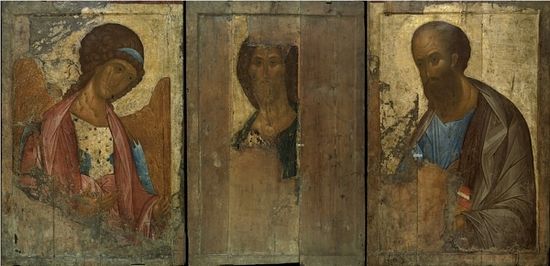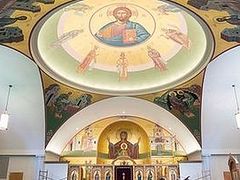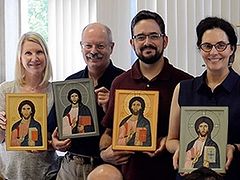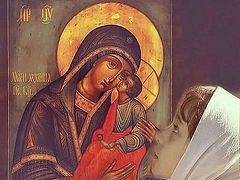Moscow, June 27, 2017
Scientific investigators are closer to proving that the artist of the three famous Zvenigorod icons is not the same as that of the famous Trinity icon which was painted by St. Andrei Rublev, Moscow’s Tretyakov Gallery announced today, reports Pravmir.
Zelfira Tregulova, the director of the gallery, which houses Rublev’s Trinity, explained that the work on the icons was carried out with all possible modern techniques for the study of ancient Russian art. According to her, in connection with new discoveries in the gallery, they intend to reissue the catalogue of ancient Russian paintings from the museum’s collection, first issued in 1995, as the science has far progressed since then.
Research on the icons will continue. The results announced today are only a stage in a complex, multi-stage work being carried out by the museum, Tregulova added.
The famous Zvenigorod icons, which include half-length icons of Christ the Pantocrator, the Archangel Michael, and the Apostle Paul, were found in 1918 near the Dormition Cathedral on the Gorodok in Zvenigorod, in a shed among firewood, according to many sources. However, the exact details of the find are not clear, but it is certain that they were discovered by Gregory Chirikov of the All-Russian Commission for the Preservation and Discovery of Ancient Russian Painting, which saved icons throughout the country.
The three icons were part of a Deesis, with the Theotokos and St. John the Forerunner, and any other figures shown facing towards Christ with their hands raised in prayers, so there would have originally been seven or nine icons in all.
After the restoration of the icons, artist and restorer Igor Gabra, head of the Central Restoration Workshops, said, “Their creator can only be Rublev—only he mastered the art of subjecting all these cool, pink-purple-blue colors to one harmonized will; only he dared to solve color challenges…” Since then, all textbooks on the history of Russian art have indicated St. Andrei Rublev as the artist of the Zvenigorod icons—the only question being to which church they originally belonged.
Thanks to the work of scientists of the Tretyakov Gallery and the State Research Institute for Restoration it has now been proven that the Zvenigorod icons were in fact not painted by Rublev. They were painted at the end of the fourteenth century, while the Trinity icon was painted in the 20s of the fifteenth century.
According to art historian and academician of the Russian Academy of the Arts Alexei Lidov, “we have gained one or two more great artists, who worked contemporaneously with the great Andrei Rublev and Theophanes the Greek.”
“Besides, this is a triumph of justice: The icons found in 1918 were attributed to another remarkable Russian iconographer. The occurrence is a remarkable achievement of art restoration and criticism. This discovery confronts us with the need to rethink the history of Russian art of this era and to abandon the mythology familiar from childhood,” Lidov concluded.





